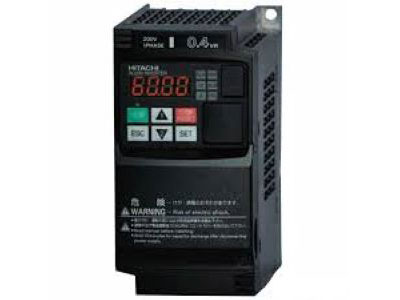Key Takeaway
To calculate the slip rating of a three-phase induction motor, follow these steps:
1. Find the synchronous speed (Ns): This is the speed of the magnetic field, calculated as Ns = (120 * Frequency) / Number of Poles. For example, if the frequency is 60 Hz and the motor has 4 poles, Ns = (120 * 60) / 4 = 1800 RPM.
2. Get the rated full load speed (N): This is usually given on the motor’s nameplate. Suppose it is 1750 RPM.
3. Calculate the slip (S): Slip = (Ns – N) / Ns * 100%. Using our example, Slip = (1800 – 1750) / 1800 * 100% = 2.78%.
Importance of RPM in VFD Operation
Understanding the Revolutions Per Minute (RPM) in Variable Frequency Drives (VFDs) is crucial for optimal performance in industrial applications. RPM determines the speed at which a motor operates, affecting everything from efficiency to the longevity of the machinery. Accurate RPM calculation ensures that motors run at their intended speed, which is essential for processes requiring precise speed control. For newly joined engineers, grasping the importance of RPM can lead to better decision-making and troubleshooting in VFD operations.

Key Parameters Affecting RPM Calculation
Calculating RPM in Variable Frequency Drives (VFDs) involves understanding several critical parameters. The most essential are the motor’s frequency and the number of poles. The standard formula to calculate RPM is:
RPM = (120 × Frequency (Hz)) / Number of Poles
For instance, a motor running at 60 Hz with four poles will have an RPM of 1800. This calculation is straightforward yet vital for engineers to understand motor performance.
Another important factor is slip, which is the difference between the synchronous speed (calculated RPM) and the actual speed of the motor. Slip occurs due to load conditions and affects the motor’s efficiency and torque. Monitoring and adjusting for slip can help in fine-tuning the VFD settings for optimal performance.
Load conditions also play a significant role in determining RPM. Heavy loads can cause the motor to slow down, while lighter loads allow it to run closer to the calculated RPM. By understanding these parameters, engineers can make precise adjustments to VFD settings, ensuring that the motor runs efficiently and reliably.
You May Like to Read
Step-by-Step RPM Calculation Guide
Calculating RPM in a Variable Frequency Drive (VFD) is crucial for ensuring optimal motor performance in industrial applications. This guide provides a clear and straightforward method to calculate RPM, making it accessible even for newly joined engineers.
Step 1: Determine the Frequency
The operating frequency of the VFD is typically within the range of 0 to 60 Hz. You can find this value in the VFD settings or the motor specifications.
Step 2: Identify the Number of Poles
The number of poles in the motor is a fundamental specification that you can usually find on the motor’s nameplate or in the manufacturer’s documentation. Common pole numbers are 2, 4, 6, and 8.
Step 3: Apply the Formula
With the frequency and number of poles identified, use the following formula to calculate the RPM:
RPM = 120 ×Frequency / Number of Poles
Example Calculation:
For a motor operating at 60 Hz with 4 poles, the RPM is calculated as follows:
RPM = 120 × 60/4 =1800
If the slip is 3%, the actual RPM is:
Actual RPM = 1800 −(1800 ×0.03) =1746
Understanding and calculating RPM accurately ensures optimal performance and efficiency of your motor-driven systems. Keep these steps handy for precise calculations.
Tools and Resources for RPM Calculation
As an industrial expert, understanding the tools and resources available for RPM (Revolutions Per Minute) calculation is crucial for optimizing machinery performance. Digital tachometers are invaluable in this regard. They provide real-time RPM measurements, offering precise data that allows for accurate adjustments. These devices are straightforward to use and deliver instant feedback, making them indispensable in any industrial setting.
Another excellent resource is software tools provided by VFD (Variable Frequency Drive) manufacturers. These tools often automate RPM calculations based on input parameters such as frequency and the number of poles. By inputting these variables, the software can quickly compute the RPM, saving time and reducing the potential for human error. This automation simplifies the process, especially for those who are new to the industry.
Additionally, online calculators are readily available and easy to use. These calculators typically require only the frequency and the number of poles to compute the RPM. They are accessible and convenient, providing quick results without the need for complex manual calculations.
Common Mistakes and Solutions in Calculating RPM
Explaining to a Newly Joined Engineer
Despite its simplicity, calculating RPM can sometimes lead to errors. One common mistake is the incorrect identification of the number of poles in the motor. This can drastically affect your calculations. Another frequent issue is ignoring the slip factor, which is essential for accurate RPM determination. Additionally, misinterpreting the frequency settings on the VFD can lead to incorrect calculations.
To avoid these pitfalls, always double-check the motor’s nameplate for accurate data. This includes verifying the number of poles, the rated speed, and other crucial details. Ensure the VFD settings match the required specifications, such as the input frequency and voltage. When in doubt, consult the manufacturer’s guidelines or seek advice from experienced colleagues.
Conclusion
Accurate RPM calculation is foundational for the effective operation of VFDs. It ensures that motors run at the correct speed, enhancing both efficiency and lifespan. By understanding the importance of RPM, knowing the key parameters, following a step-by-step calculation guide, utilizing available tools, and avoiding common mistakes, engineers can master this essential skill. Accurate RPM calculations lead to smoother operations and better performance in industrial applications, proving invaluable for both seasoned professionals and newly joined engineers.
